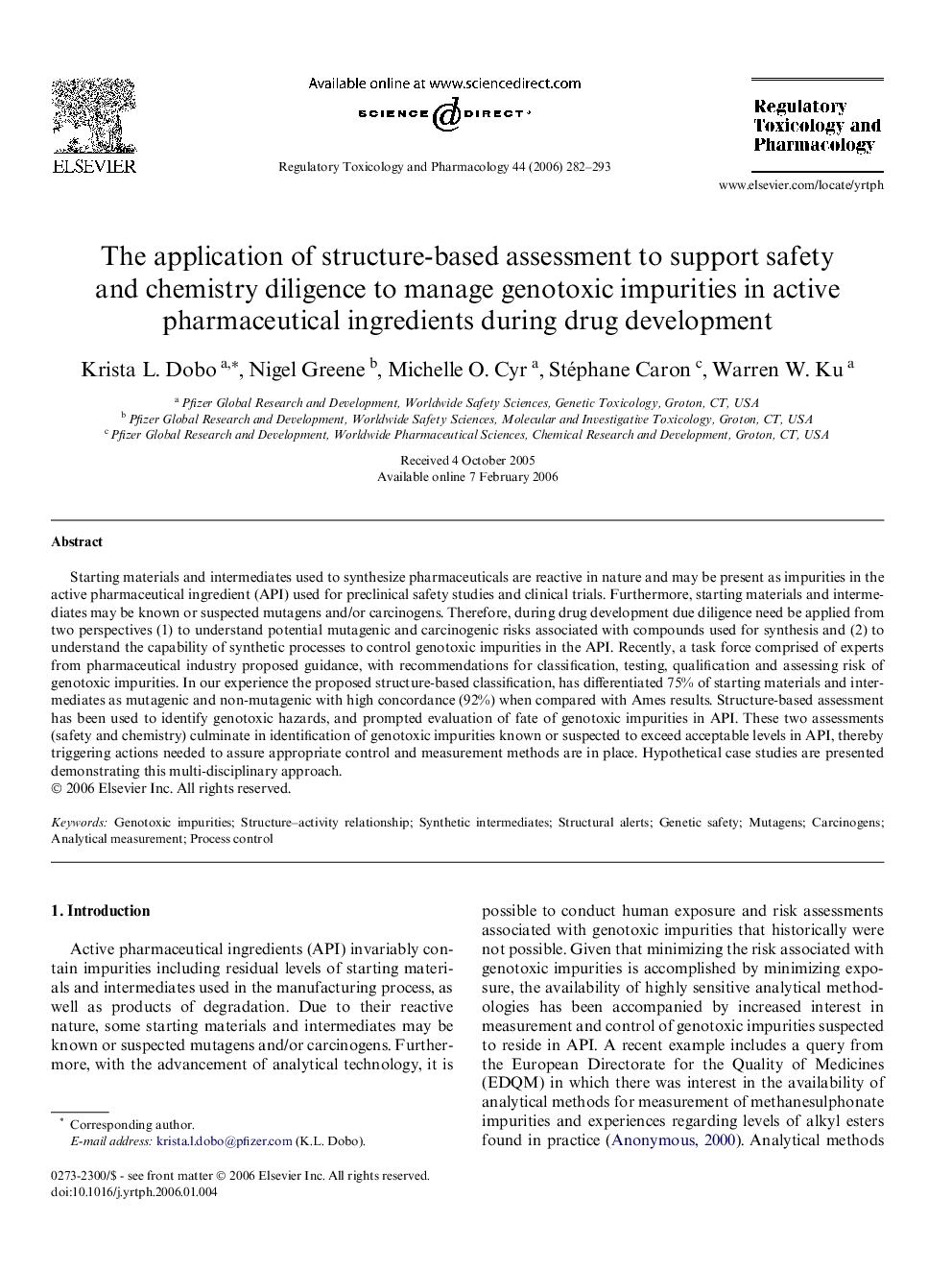| کد مقاله | کد نشریه | سال انتشار | مقاله انگلیسی | نسخه تمام متن |
|---|---|---|---|---|
| 2593026 | 1132064 | 2006 | 12 صفحه PDF | دانلود رایگان |

Starting materials and intermediates used to synthesize pharmaceuticals are reactive in nature and may be present as impurities in the active pharmaceutical ingredient (API) used for preclinical safety studies and clinical trials. Furthermore, starting materials and intermediates may be known or suspected mutagens and/or carcinogens. Therefore, during drug development due diligence need be applied from two perspectives (1) to understand potential mutagenic and carcinogenic risks associated with compounds used for synthesis and (2) to understand the capability of synthetic processes to control genotoxic impurities in the API. Recently, a task force comprised of experts from pharmaceutical industry proposed guidance, with recommendations for classification, testing, qualification and assessing risk of genotoxic impurities. In our experience the proposed structure-based classification, has differentiated 75% of starting materials and intermediates as mutagenic and non-mutagenic with high concordance (92%) when compared with Ames results. Structure-based assessment has been used to identify genotoxic hazards, and prompted evaluation of fate of genotoxic impurities in API. These two assessments (safety and chemistry) culminate in identification of genotoxic impurities known or suspected to exceed acceptable levels in API, thereby triggering actions needed to assure appropriate control and measurement methods are in place. Hypothetical case studies are presented demonstrating this multi-disciplinary approach.
Journal: Regulatory Toxicology and Pharmacology - Volume 44, Issue 3, April 2006, Pages 282–293